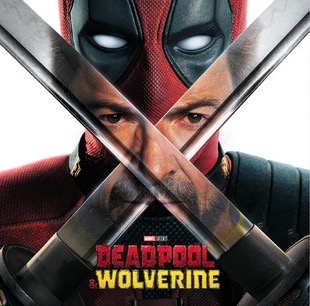It’s difficult to know where to start with Bi Gan’s sprawling, lengthy ode to vampirism qua survival. The film comprises five sections spread over what seems like at least a century which are partly related through the figure of Jackson Yee. He plays mostly a gangster (art thief, gang enforcer) who interacts with mysterious women (including Shu Qi but also the well cast Li Gengxin who plays a singer in the last section). Set in the usual dystopian future, the main premise is that most people have given up dreaming in order to live longer, but some – known as the Deliriants – have kept their ability to dream. As such they are a commodity and much sought out.
All of this dreaming/not dreaming, is a filament that maintains a tradition of cinema. Bi Gan clearly thinks the cinema is in danger of dying, and yet is of paramount importance because it contains, as Resnais’ documentary on the French National Library more than half a century ago observes, “toute la memoire du monde.” In Bi Gan’s case it is vampires who seem to be the guardians of tradition (and what a blood thirsty tradition it is).
His interpretation (if one can call it that) of vampires is that they are among us, they are evil, and it seems they are both desired and necessary. These observations are not so novel so it is in the telling and references that we must look for some kind of interest and value.
Bi Gan has established himself, in a Murnau-esque way (and his vampire inclusion reinforces this reference) as a long-take filmmaker. This was most evident in the maestro long shot that descends down a mountain, through houses etc in his second film A Long Day’s Journey Into Night.
The characteristic of the extremely long take (and in Murnau’s time 10 minutes was long) is two-fold – anxiety and dreaminess. A kind of detached floating but also an engagement with the suspense of reality. Murnau’s classic long take in Sunrise draws us into the world but we are a little on edge (or rather his contemporary audience might have been) because we don’t quite know what we will find there. Similarly in the virtuoso take in Joseph H. Lewis’ Gun Crazy where his version of Bonnie and Clyde rob a bank but the camera is placed inside their getaway car so much of the action is taking place off screen. We wonder what is going on and what will happen.
There are many more examples, many of them related for some reason to gangster movies, Altman’s Thieves Like Us and particularly the wonderful first shot sequence of The Long Goodbye where we follow Elliot Gould (as Philip Marlowe) from supermarket to his unusually placed apartment.
The point is that the long take comes from a dream-state consciousness. It is deliberately ambiguous, and by nature is likely both boring and exciting in varying proportions.
In Bi Gan’s hands the long take becomes an expression of stream-of-consciousness but not just from one person’s point of view (as in the whole POV approach of The Lady in the Lake) but from various points of view. This seems to be the ambition more than the achievement which may help to explain the film’s division into five sections in order to spread the points of view. But the “delirium” not the bastardized term “deliriant” that is adopted here, is consonant with 19th century European literature where a state of delirium often conjured up vampires (we have to assume this situation has to do with opium, heroin, blood letting, various Victorian medical practices such as the early use of anesthetic gas).
These dark “fantasy” aspects of Victorian life led quite directly to 20th century surrealism and its insistence on dream-like states that were often violent or disturbing (the Dali designed dream sequence in Hitchcock’s Spellbound is but one example).
Delirium, the beauty of evil, the quest for immortality – these are all inherent in the cinema, and pointers to the idea of the dream of consciousness long take. It is an impossible quest as shown in the masterful long take in the last section of the film where we are treated to not only real time unfolding, but also a speeded up shot that reflects the inconsistency of our experience of time. When the long take of this sequence is done, the film, ipso facto life itself, is over.
In purely cinematic interpretation, we can then surmise that the "resurrection" of the title is not the Christian miracle of Christ, but the resurrection of actors, stories, images, sounds everytime a film is played. For Bi Gan it seems that because cinema is so threatened, this projection/resurrection in future could in itself be a miracle.


